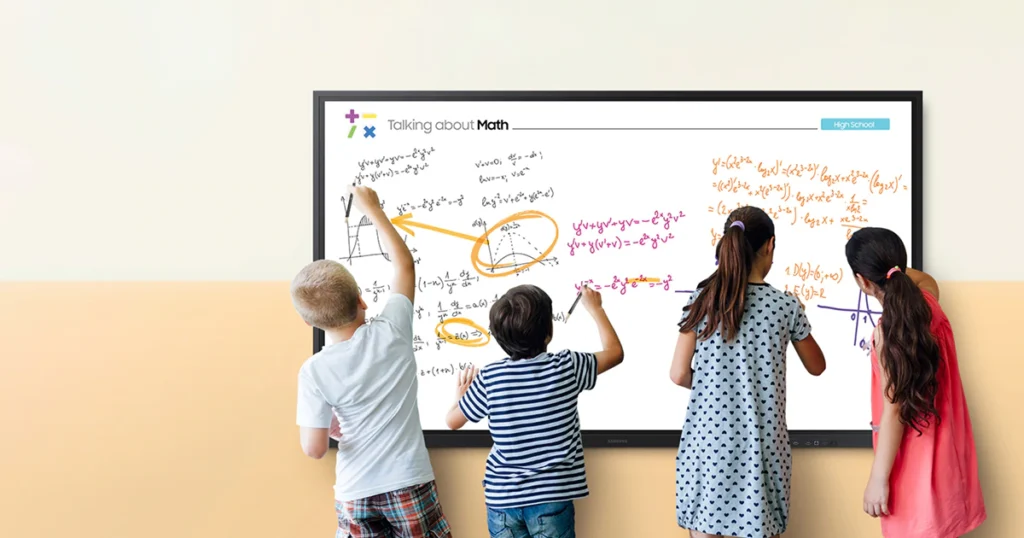In an age of digital screens and virtual classrooms, one classic tool has stood the test of time—the classroom blackboard. This unassuming board, covered in chalk dust and filled with handwritten knowledge, has been an integral part of education for generations. This blog explores the enduring significance of the classroom whiteboard, its evolution, and its place in contemporary learning environments. From its historical roots to its modern-day applications, join us on a journey to discover how this simple yet powerful tool continues to shape the educational landscape.
The Origins and Evolution of the Classroom Whiteboard:
The classroom blackboard has a rich history that dates back centuries. In this section, we delve into its origins, tracing the evolution of this teaching aid:
- Historical Roots: Explore the use of slate boards in ancient civilizations and their evolution into the modern blackboard.
- Invention and Development: Discuss the contributions of educators like James Pillans and the refinement of the blackboard in the 19th century.
- Chalk to Chalkboard Paint: Explain how chalkboard paint transformed classroom surfaces, making them writable and erasable.
The Role of the Classroom Whiteboard in Teaching:
The blackboard has been an indispensable tool for educators in conveying information and engaging students. In this section, we delve into its primary roles in teaching:
- Visual Aid: Discuss how the blackboard serves as a dynamic visual aid, enhancing comprehension and retention.
- Interactive Learning: Explain how teachers use the board to involve students in problem-solving and discussions.
- Organizational Tool: Highlight how the blackboard helps structure lessons and convey information clearly.
Benefits and Advantages of Using Classroom Whiteboards:
Despite the rise of digital technologies, the blackboard continues to offer several unique advantages in the classroom. This section discusses these benefits:
- Simplicity: Emphasize the ease of use and minimal setup required for blackboard-based teaching.
- Tactile Learning: Explain how writing on the board and seeing it in real-time can enhance students’ tactile learning experience.
- Cost-Effectiveness: Discuss the affordability of blackboards compared to electronic alternatives.
- Environmentally Friendly: Mention the sustainability of using reusable boards and chalk instead of disposable materials.
Incorporating Technology with Traditional Whiteboards:
The integration of technology in education is on the rise, but it doesn’t have to replace traditional methods. In this section, explore how modern classrooms can combine the best of both worlds:
- Smart Blackboards: Discuss the use of smart boards that combine traditional writing surfaces with digital capabilities.
- Projection Systems: Explain how projectors and document cameras can enhance the blackboard’s functionality.
- Hybrid Learning: Describe how teachers can seamlessly transition between analog and digital teaching methods.
Challenges and Considerations:
While the classroom blackboard offers many benefits, it’s essential to acknowledge the challenges and considerations:
- Chalk Dust and Allergies: Address the issues related to chalk dust, especially for students with allergies or sensitivities.
- Maintenance: Discuss the need for regular cleaning and maintenance of chalkboards.
- Digital Divide: Recognize that not all classrooms have access to modern technology, and some educators may still rely solely on traditional blackboards.
Preserving the Legacy of Classroom Whiteboards:
The classroom blackboard has a unique place in the history of education. This section discusses the importance of preserving this legacy:
- Historical Significance: Highlight the cultural and historical significance of blackboards in education.
- Teaching Tradition: Emphasize the value of passing down teaching methods that have proven effective over generations.
Conclusion: The Enduring Charm of the Classroom Whiteboard:
In a world where technology is advancing at an unprecedented pace, the classroom blackboard stands as a symbol of timeless teaching and learning. Its simplicity, effectiveness, and rich history make it an invaluable tool in education. Whether as a standalone teaching aid or in harmony with modern technology, the blackboard continues to shape the educational landscape. As we celebrate its enduring charm, let us remember that while the tools of education may evolve, the essence of teaching and learning remains rooted in the traditions that have brought us to where we are today. The classroom blackboard will forever hold a special place in the hearts of educators and learners alike, bridging the past, present, and future of education.














